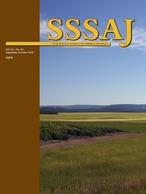Expansion of crop production into high-altitude native grasslands is occurring in the Peruvian High-Andes due to climate change and agricultural intensification, with little understanding of the consequences to the ecosystem. The objective of this study was to determine the impact of land-use changes on soil fertility and nutrient cycling to guide future land management. Comparisons were made between native grasslands and two alternative farming systems; the first was a system in which native grassland was replaced by an annual cash crop, maca (Lepidium meyenii Walp.), followed by a long fallow and the second was a long-standing perennial cultivated pasture. There was greater N mineralization, extractable Bray-1 P, and K+ in recently converted maca soils relative to adjacent native grassland soils most likely caused by tillage-induced nutrient mineralization and by incorporation of manure and native grassland residue during the first year of land preparation prior to planting maca. Soil fertility, as determined by an ex situ pot trial to measure plant yield, was correlated with plant cover, soil total organic carbon, and water stable aggregates (WSA) under fallow following maca, suggesting that soil erosion might be an issue in the long term. In cultivated pastures, we found an increase in long-term fertility driven primarily by the build-up of soil N and improved soil structure in the perennial grass-legume mixture compared with adjacent native grassland. Responsible management of the Puna agroecosystem requires restoration of plant cover after annual cropping of maca or the establishment of mixed perennial cultivated pasture.
Land use effects on soil fertility and nutrient cycling in the Peruvian High-Andean puna grasslands.
Citation: Rolando, J.L.; Dubeux, J.C.; Ramírez, D.; Ruiz-Moreno, M.; Turin, C.; Mares, V.; Sollenberger, L.; Quiroz, R. 2018. Land use effects on soil fertility and nutrient cycling in the Peruvian High-Andean puna grasslands. Soil Science Society of America Journal. ISSN 0361-5995. 82:2. pp. 463-474
2018-10-30
CLIMATE CHANGE
South America
Peru
journal_article

